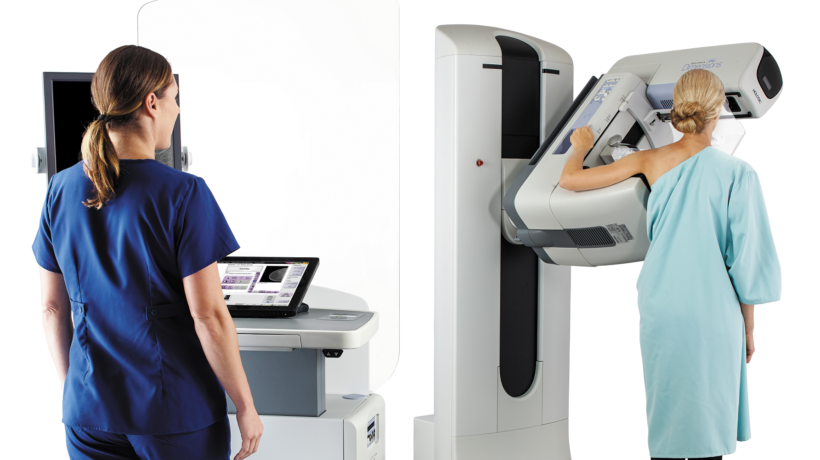Understanding Washington’s New Breast Density Notification Law with TRA Medical Imaging

Some people who have mammograms this year may begin receiving additional information in their mammography screening result letters. In accordance with new Washington State law, which went into effect January 2019, some patients throughout Washington will receive additional information addressing all of those determined to have greater than average breast density. Drs. Grant Tibbetts (Medical Director for TRA Medical Imaging in Olympia) and Yuyao Zhang (TRA’s newest breast imaging subspecialist), want you to be aware of what this new law means for you.
Breast Density: What is it and why does it matter?
Breasts are mainly composed of fatty tissue and fibroglandular tissue, the latter having the potential to produce milk. Breast density is simply a comparison of how much fibroglandular tissue a person has compared to their fatty tissue. The ratio of the two tissue types varies greatly between people. A person with a greater amount of fibroglandular tissue is considered to have dense breasts. Additionally, breast density usually decreases with increased weight and age. Breast density is identified in routine mammogram screenings. The new law simply asks providers to let patients know directly if they have above average density.
Breast density matters for a couple of reasons. First, dense tissue can make it more difficult for health care providers to see cancer on mammogram screenings. “In a mammogram, dense tissue appears white, and cancerous tissue also appears white, so it may be less conspicuous or completely hidden, like contrails in a cloudy sky” explains Dr. Tibbetts. Second, research indicates that breast density is associated with higher breast cancer rates. “This information surprised health care professionals. We knew breast density could mask cancerous growth,” says Tibbetts, “ but we now know that people with dense breasts have a somewhat higher likelihood of developing breast cancer.” Still, most individuals with dense breasts will never develop breast cancer.
Some types of imaging may help the cancerous tissue stand out more clearly. Among these are 3D mammography (100% of screening exams performed at TRA Medical Imaging), a tremendous breakthough itself, breast MRI and breast ultrasound. The latter are tests used in selected patients, particularly those at the highest risk, or to solve problems identified on mammography. As Dr. Zhang explained: “Neither Breast MRI or Breast Ultrasound are intended to replace a mammogram, but are very useful problem solvers and may offer more clarity when needed.” For those without symptoms, or identified problems,” she reassured: “Mammograms, remain the first line of defense for early screening detection.”
Mammogram Screenings are Important
If you have less dense breasts and do not receive a breast density notification, it is still important to have regular exams and mammograms. If you are one of those individuals that receives the additional information about breast density (nearly half of women), your health care provider can help determine if any additional tests or screening are necessary. Annual screening mammography remains sufficient for most women. If you have less dense breasts and do not receive a breast density notification, it is still important to have regular exams and mammograms as density is only one factor in determining risk. While age and family history also impact breast cancer risk, a large percentage of patients diagnosed with cancer do not appear to have any significant risk factor. Early detection reduces breast cancer deaths.
An Important Note of Clarification About the New Breast Density Law
Patients that received a mammogram prior to 2019 may not have received the new notification, but if they have dense breasts, then their medical professional is likely already aware. Breast density has been included in reports to health care providers for a very long time. This additional information provided to patients with above average breast density simply brings patients into the loop when it comes to their own healthcare.
Speak to a health care professional if you have any questions regarding the new law or your own health. The fact remains, the single greatest risk factor to developing breast cancer is having breasts. While there are many different factors that affect the likelihood of developing breast cancer, breast density is just one of these factors. Continued communication with your healthcare provider will help ensure that you understand and stay abreast of the most relevant tests appropriate to your individual needs.
If you have additional questions, please speak with your healthcare provider. You can also find more information at this website created by the Washington State Radiological Society and on the TRA mammography webpage.
“
